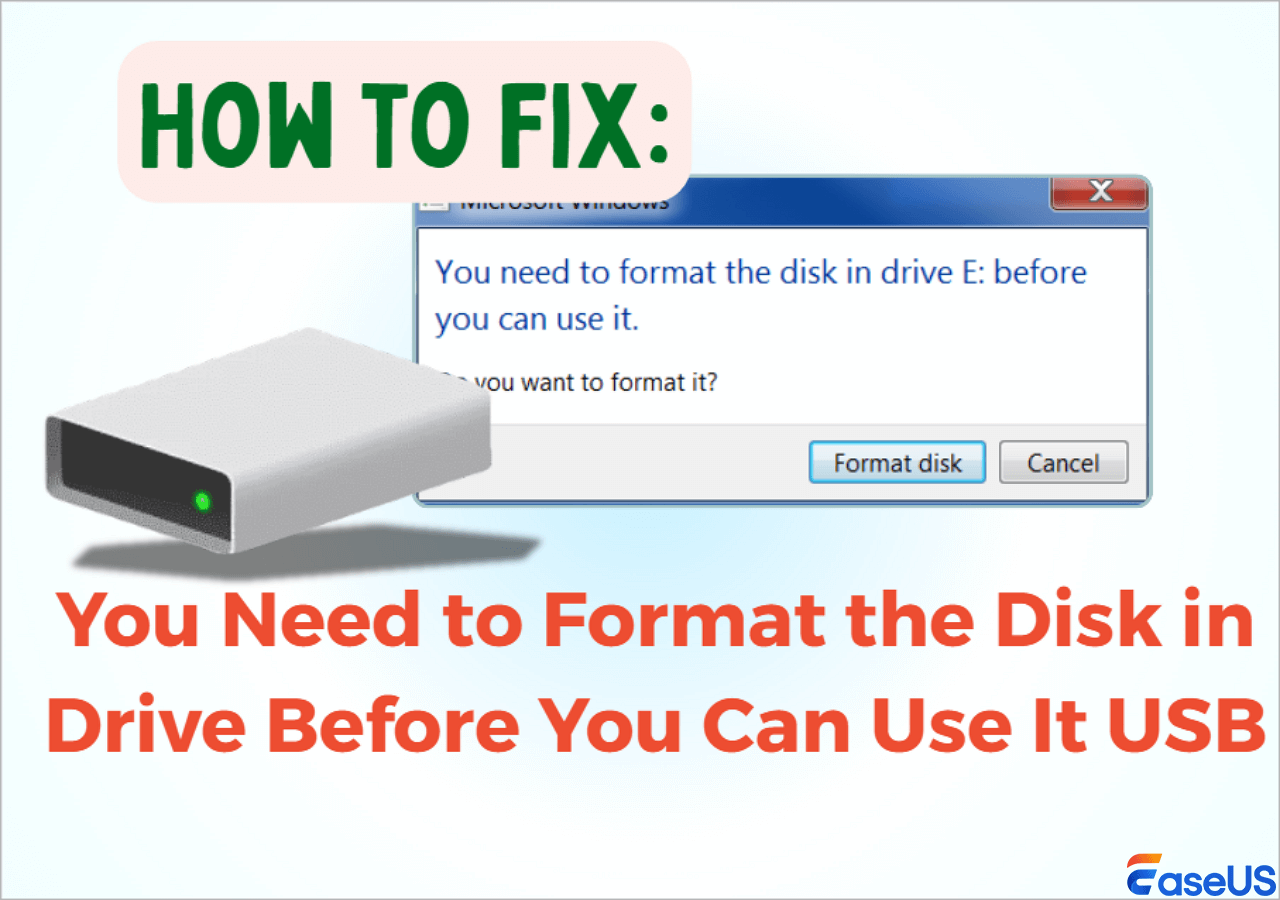-
![]() Fix: Need to Format the Disk in Drive Before You Can Use It USB
Fix: Need to Format the Disk in Drive Before You Can Use It USB December 12,2025
December 12,2025 6 min read
6 min read -
![]()
-
![]()
-
![]()
-
![]() How to Fix Corrupted and Unreadable USB Flash Drive in 2025
How to Fix Corrupted and Unreadable USB Flash Drive in 2025 December 12,2025
December 12,2025 6 min read
6 min read -
![]() How to Format a Flash Drive Without Losing Data (Complete Guide)
How to Format a Flash Drive Without Losing Data (Complete Guide) December 12,2025
December 12,2025 6 min read
6 min read -
![]() RAW USB Recovery | How to Recover Data from RAW USB Drive
RAW USB Recovery | How to Recover Data from RAW USB Drive December 12,2025
December 12,2025 6 min read
6 min read -
![]()
-
![]()
-
![]() How to Unlock USB Drive, Decrypt It and Restore Lost Data
How to Unlock USB Drive, Decrypt It and Restore Lost Data December 12,2025
December 12,2025 6 min read
6 min read
Page Table of Contents
PAGE CONTENT:
In this guide, let's talk about how to bring your files back from the shadows of a not recognized USB flash drive. We'll provide simple steps to fix and recover your cherished data. Stay with me!
Have you ever found yourself in a situation where your USB flash drive is plugged in, but your computer doesn't recognize its presence? The disappointment is real, but there's no need to be alarmed.
There are common reasons behind this issue, and knowing the causes will help pave the way to recover files from not recognized USB flash drives.
| 📁File System incompatibility | Mismatched file systems between your USB and the computer can lead to recognition or USB drive not showing up problems. Different operating systems may use distinct file systems, causing a disconnect in communication. |
| 🔌Challenges with USB Port connectivity | Difficulties arise when there are issues with the USB port, such as damage to the port, plug, or cable, impeding a stable connection. |
| 💽Drive instability or corruption | Recognition issues can stem from the instability or corruption of the USB controllers, leading to unreliable or failed connections between devices. |
| 💻Malfunctioning external hard drive | When the external hard drive malfunctions, it may necessitate either repair or replacement to restore proper functionality and recognition by the computer. |
| ❌Incompatibility or outdated drivers | Recognition problems may result from having incompatible or outdated drivers for the external drive, emphasizing the need to install the latest drivers for seamless operation. |
Recover Files from Not Recognized USB Flash Drive with Recovery Software
You can always rely on EaseUS Data Recovery Wizard for data recovery since it is a widely used third-party software designed for this purpose. This solution effectively restores files and folders under various scenarios mentioned earlier.
Whether your USB flash drive is experiencing data invisibility due to a virus attack, files being hidden, accidental deletions, or file system errors, this reliable tool can facilitate the direct recovery of your data.
It is proficient in recovering corrupted files from a USB drive and adept at restoring shortcut files, hidden files, deleted files, and RAW files from a flash drive.
When your USB fails to display files, utilizing this tool proves to be the most efficient method for data retrieval. Below are some steps on how to use our USB recovery tool.
Step 1. Run USB Data Recovery Software
Connect the USB drive or pen drive to your computer and launch EaseUS USB data recovery software on your PC. Select the drive which is labeled as a External drives, and click "Scan for lost data" to start looking for lost files.
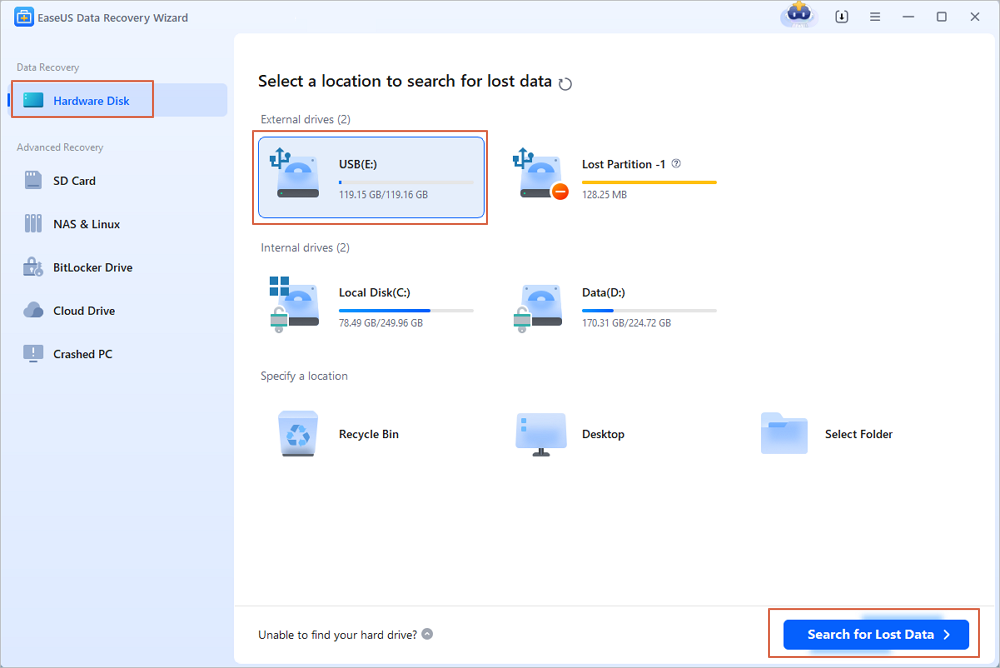
Step 2. Scan and Search Lost Files on a USB Drive
EaseUS Data Recovery Wizard will thoroughly scan your USB flash drive/pen drive and find all your lost data on it. When the scan process completes, use the Filter feature to find wanted files.
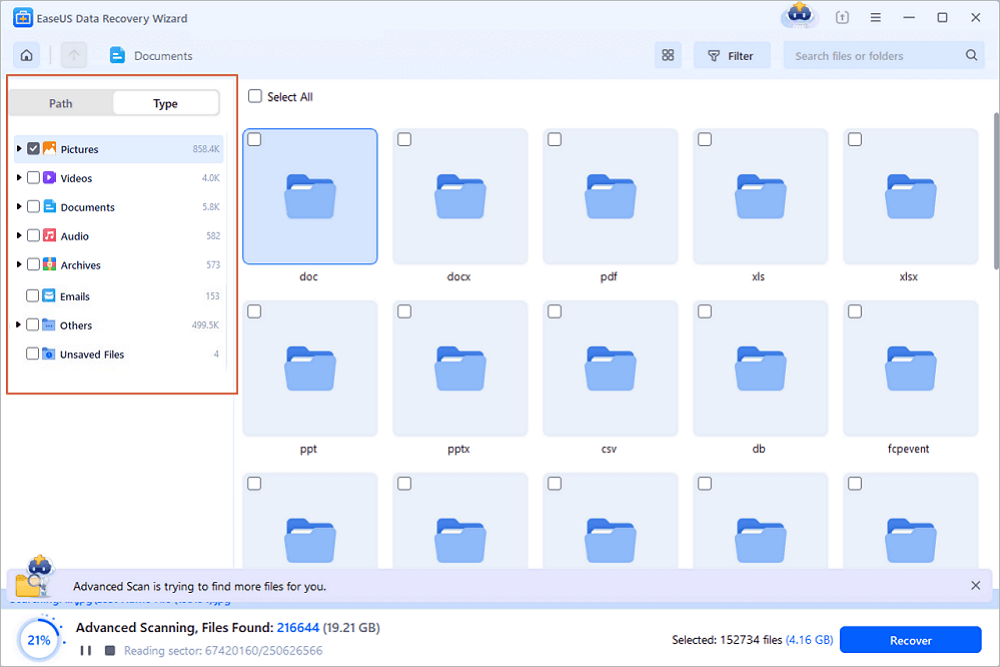
Step 3. Restore All Lost Files from USB
A double-click will allow you to preview the files. Select the target files to restore and click "Recover" to save them to a secure location on your PC or other external storage devices.
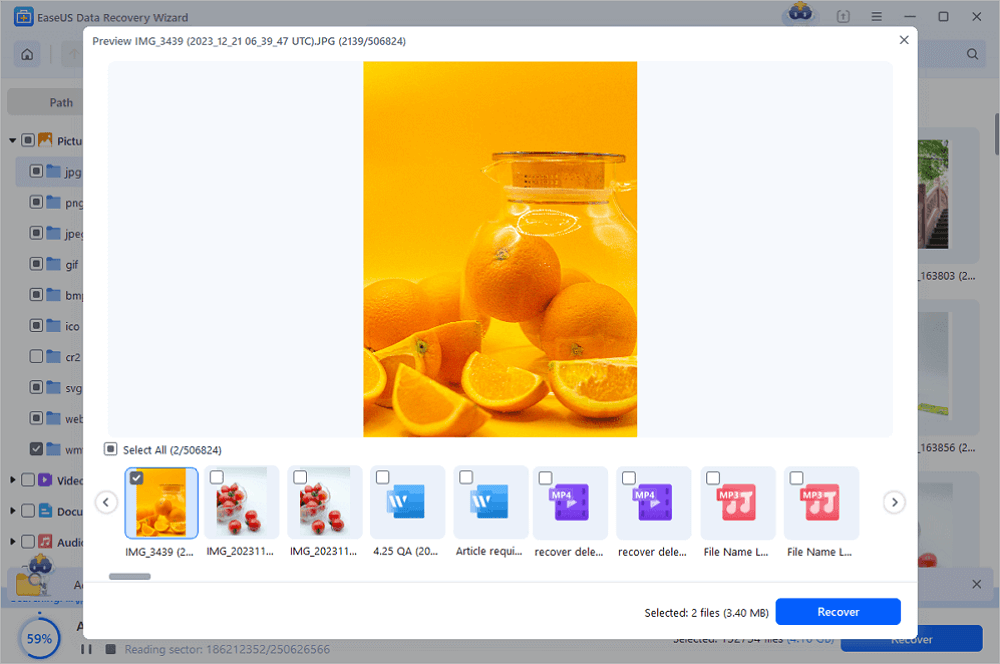
Remember to share this guide on your social media handles to help others learn how to recover files from a not recognized USB flash drive.
Fix Not Recognized USB and Recover Data with Data Recovery Services
When it comes to rescuing your files from a not-recognized USB, Method 1 is a reliable go-to. However, if you're seeking a more comprehensive solution, EaseUS data recovery services step into the spotlight.
Unlike in most circumstances, where the user is actively involved in troubleshooting and recovery, EaseUS offers a professional service where experienced technicians take over.
Using our extensive experience in data recovery, EaseUS data recovery services excels in recovering deleted files from various devices such as HDDs, SSDs, servers, desktops, laptops, and virtual environments.
Plus, our seasoned engineers can remotely recover your data, providing convenient solutions whether you're at home or in the office.
Consult with EaseUS data recovery experts for one-on-one manual recovery service. We could offer the following services after FREE diagnosis
- Repair corrupted RAID structure, unbootable Windows OS, and corrupted virtual disk file
- Recover/repair lost partition and re-partitioned drive
- Unformat USB drive and repair raw drive(Bitlocker encrypted drive)
- Fix disks that become GPT-protected partitions
How to Make Windows Recognize the USB Flash Drive and Recover Data
Now that we understand the reasons behind USB recognition issues, let's delve into solutions to make Windows recognize your USB flash drive again.
Read on!
Fix 1. Change USB Flash Drive Letter
If your computer does not recognize the USB flash drive during data recovery, yet it appears in Disk Management, the issue may be related to the drive letter.
Resolving this problem involves assigning or modifying the drive letter, and the following steps outline how to rectify the USB flash drive not being recognized by changing the drive letter using CMD.
Step 1. Within the search bar beside the "Start" menu, type cmd and click "Run as administrator".
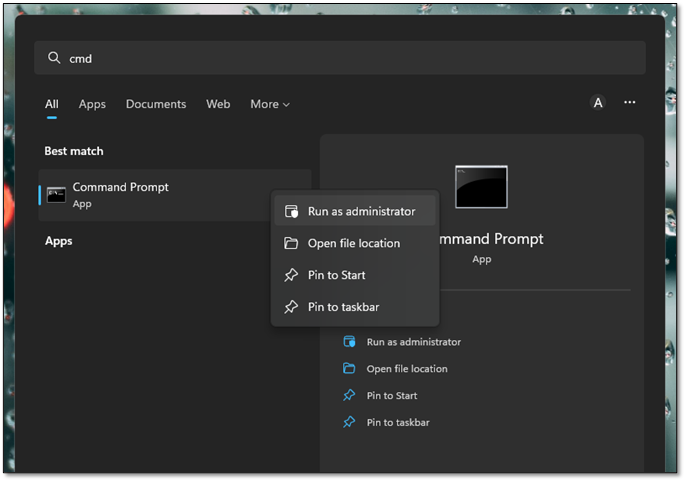
Step 2. Input the command DISKPART and press "Enter".
Step 3. After that, type list volume and press "Enter" to view a list of all available volumes containing not only physical drives.

Step 4. Identify the letter you wish to change and note its corresponding number.
Step 5. Enter the command Select volume X, replacing "X" with the noted number.
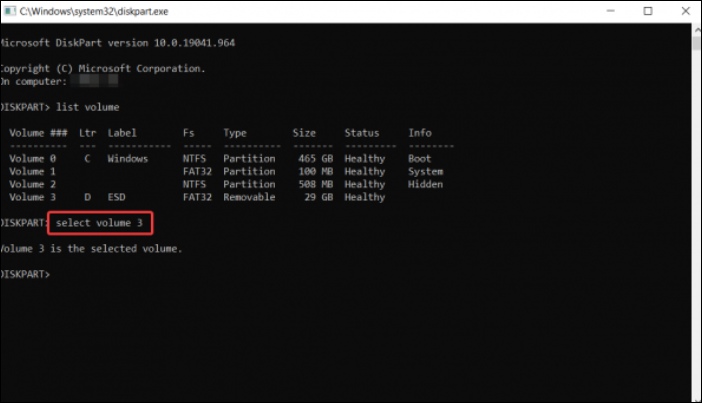
Step 6. Execute the command assign=X, substituting "X" with the desired letter to be assigned.
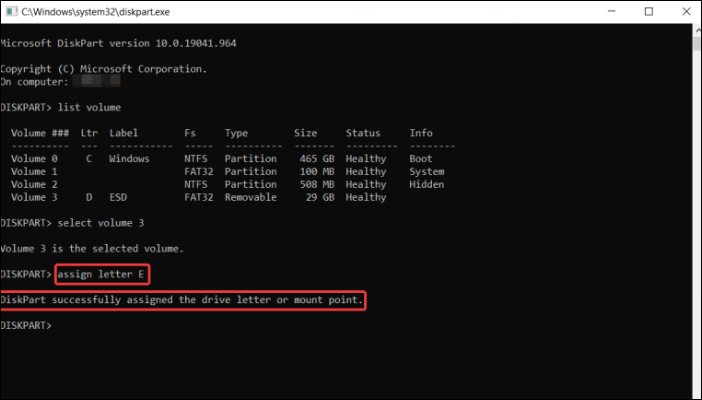
Step 7. Finally, close the "Command Prompt".
By following these steps, you can address the issue of a USB flash drive not being recognized by modifying its drive letter through CMD.
Fix 2. Update or Reinstall the USB Driver
If your computer fails to recognize your USB flash drive, the issue may stem from outdated or corrupted drivers. To address this problem, consider updating or reinstalling the USB driver using the following steps:
Step 1. Press the combination of "Win + X" and choose "Device Manager".

Step 2. Within "Device Manager," locate and select "Disk drives" to find your USB drive.

Step 3. Right-click on the USB drive and choose "Properties".

Step 4. Navigate to the "Driver" tab. Here, you have the option to either "Update Driver" or "Uninstall Device".

If you choose to "Update Driver," opt for "Search automatically for drivers" in the pop-up window that appears. Your computer will then automatically update the USB driver.
On the other hand, opting for "Uninstall Device" requires reconnecting your USB flash drive after the uninstallation process concludes. The driver will reinstall automatically upon reconnection.
You can check more information about update drivers in Windows 11:
How to Update USB Drivers on Windows 11 [2023 Guide] - EaseUS
Are you wondering how to update drivers on Windows 11? This article will guide you on how to use and fix your drivers. Read more >>
Fix 3. Reinstall USB Controllers
USB controllers play a crucial role in overseeing the functionality of all USB-connected devices to your computer.
Reinstalling these controllers can effectively reconstruct the connection between the devices and the computer. Follow these steps to proceed:
Step 1. Right-click on your "Start" button and access "Device Manager".
Step 2. Locate and expand the section labeled "Universal Serial Bus Controllers".

Step 3. Right-click on the specific USB controller and choose "Uninstall device".

Step 4. Repeat the third step for each USB controller listed.
Step 5. After that, restart Windows 11 or 10. After rebooting, the USB controllers will be automatically downloaded and reinstalled, establishing a fresh connection with the connected devices.
Fix 4. Run Hardware and Device Troubleshooter in PowerShell
Windows incorporates various troubleshooters tailored to address specific issues. The Hardware and Devices troubleshooter, in particular, is excellent at scanning your computer for and rectifying USB-related problems, thereby enabling access to an unrecognized USB drive.
Use the following steps to initiate and execute the Hardware and Devices troubleshooter:
Step 1. Use the search box to find Windows PowerShell.
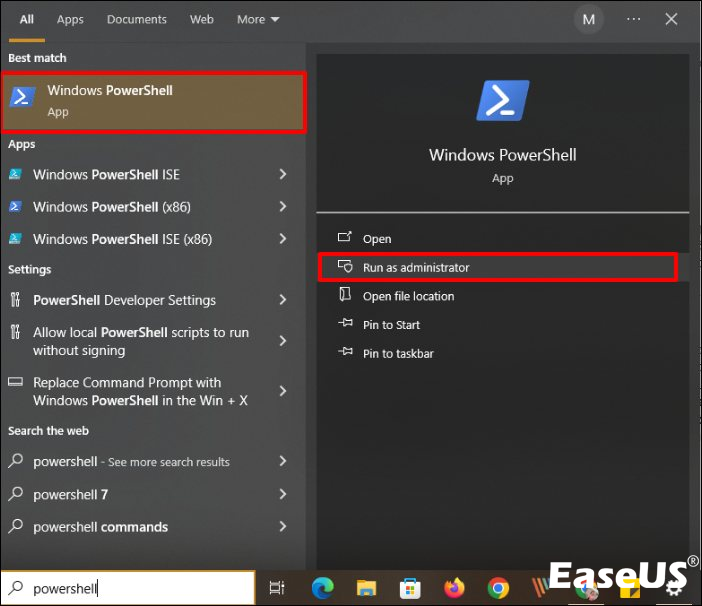
Step 2. Confirm with a "Yes" if prompted by UAC.
Step 3. Type the command msdt.exe -id DeviceDiagnostic and press "Enter".
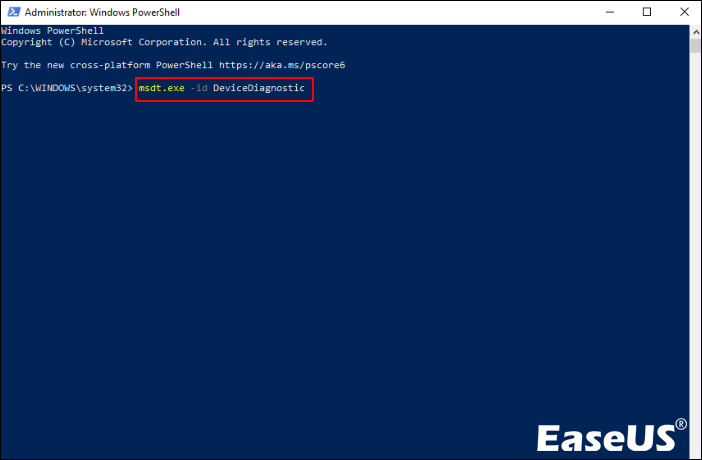
Step 4. Click "Next" and proceed to follow the on-screen instructions that align with the issues detected by Windows.

Fix 5. Format USB Flash Drive
Formatting any USB involves either introducing a new file system or refreshing the one that was there at first.
This procedure entails the removal of any data present on the USB. Formatting serves as a swift and efficient means to address issues with USB flash drives that are not being recognized, essentially restoring them to their factory settings.
After safeguarding your files from the USB to a secure location, you might consider formatting them to resolve any issues hindering normal recognition. You can recover the formatted USB drive with EaseUS Data Recovery Wizard
Be sure to follow these steps to format an unrecognized USB:
Step 1. Right-click on the "Start" button and access "Disk Management".
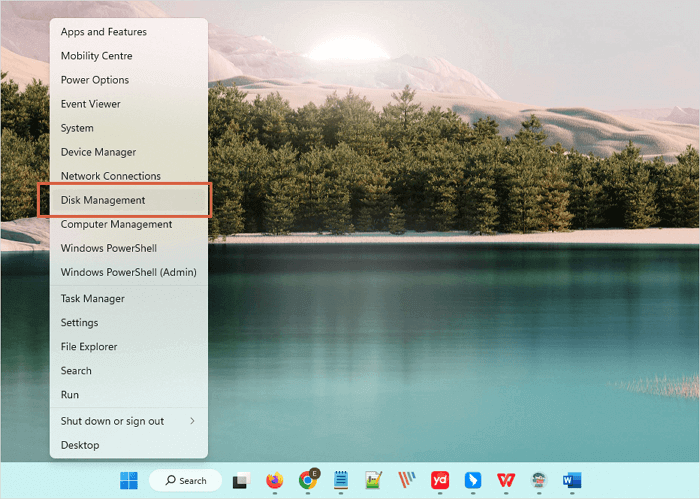
Step 2. Right-click on the volume corresponding to your USB and choose the "Format" option.

Step 3. Ensure that "Perform a quick format" is selected. Modify the Volume label, File system, and Allocation unit size if required. After that, confirm the changes by clicking "OK" when prompted.

If these methods helped you regain access to your USB data, share this article on social media and help others facing similar issues.
Conclusion
In conclusion, resolving USB recognition issues requires a systematic approach, addressing factors such as faulty USB ports, driver problems, file system incompatibilities, and potential physical damage to the USB flash drive.
The methods we've looked at in this guide, ranging from changing USB flash drive letters to utilizing third-party recovery tools like EaseUS Data Recovery Wizard, aim to provide comprehensive solutions for users encountering these frustrating problems.
For a seamless and effective recovery process, we highly recommend downloading EaseUS Data Recovery Wizard. This robust recovery software has proven to be a reliable ally in retrieving files and folders under various circumstances, such as file corruption and accidental data loss.
Not Recognized USB Recovery FAQs
Here's more information about how to recover files from not recognized USB flash drive. Take a look!
1. How do I recover data from a USB drive that is not recognized?
There are several ways to recover data from unrecognized USB drives. These are:
- Change USB Flash Drive Letter
- Update or Reinstall the USB Driver
- Reinstall USB Controllers
- Run Hardware and Device Troubleshooter in PowerShell
- Format USB Flash Drive
2. How do you fix a USB flash drive that is not showing up?
Here's how to do it:
- Disconnect and then reconnect the USB drive.
- Ensure the USB drive is powered on.
- Verify that all required drivers and software are correctly installed.
- Attempt connecting the USB drive to a different port on your computer.
- Restart your computer.
- Inspect the USB stick or port for any signs of damage or accumulated dust.
- Test the unrecognized USB drive on another computer to see if the issue persists.
3. Why does my USB drive not show up in Windows?
Here are some possible reasons why your USB drive does not show up in Windows:
- File System incompatibility
- Challenges with USB Port connectivity
- Drive instability or corruption
- Malfunctioning external hard drive
- Incompatibility or outdated drivers
4. Can I access my data on USB when it is not showing?
Yes, you can. To access the data when it's not showing:
Step 1. Plug in the USB pen drive or flash drive into your PC.
Step 2. Access Windows "File Explorer" and navigate to "Tools," then select "Folder Options".
Step 3. In the "View" tab, enable the option to "Show hidden files, folders, and drives".
Step 4. Click "Apply" to ensure that files and folders are not hidden.
Was this page helpful?
-
Finley is interested in reading and writing articles about technical knowledge. Her articles mainly focus on file repair and data recovery.…
-
Dany is an editor of EaseUS who lives and works in Chengdu, China. She focuses on writing articles about data recovery on Mac devices and PCs. She is devoted to improving her writing skills and enriching her professional knowledge. Dany also enjoys reading detective novels in her spare time. …

20+
Years of experience

160+
Countries and regions

72 Million+
Downloads

4.9 +
Trustpilot Score


Free Data
Recovery Software
Recover data up to 2GB for free!


